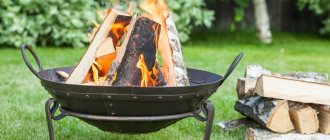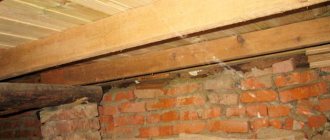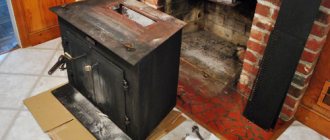A woodpile is an ideal place to store firewood in optimal conditions. In addition, neatly stacked firewood will make your property more attractive. But first, you need to choose a suitable place in advance. Today we will look at all the different options.
For long-term storage and drying of firewood, you can use a special shed or shed. Woodpiles are also used in landscape design: beautiful stacking of firewood in an original way will add a special flavor to the area.
Designer woodpile: main advantages
1. Practicality and functionality. By placing the woodpile in a convenient place, you won’t have to go far to get firewood.
2. In winter, the firewood can serve as a kind of barrier, so clearing the paths of snow will be much easier and faster.
3. A beautiful woodpile is the highlight of the landscape design of the site.
4. Such an element in the country is a great idea for some functional structure, for example, the base of a table near the barbecue.
Metal
Metal frames have the usual advantages of metal products:
- serve for a long time;
- resistant to external influences;
- may have a beautiful design.
An inexpensive and elegant option is a woodpile made of aluminum profile. Manufacturing will take several hours, the weight will be insignificant, which allows it to be classified as a mobile structure that can be easily moved to any place.
Products made of steel and iron will require skills in handling a welding machine and will be more expensive. You can turn to specialists - just draw a sketch of the desired design.
Forged products made to order look the most elegant. They themselves will decorate any area.
How to fold a woodpile?
Making a firewood rack with your own hands is not difficult. Let's consider the process of constructing the most typical structure.
Tools and materials:
- carpentry clamp for ease of work;
- hammer;
- circular saw;
- roulette;
- wood nails.
For the frame, you should determine the required number of boards:
- for the base: two boards 3 m each, 3 cm thick, 10-15 cm wide;
- for the side parts: four 1.5 m boards with the same parameters;
- one board 1 m long, thickness and width are similar to the previous ones.
After all the preparatory work, you can begin the main process.
Additional Information
If you plan to build a lightweight firewood shed with a capacity of only a few cubic meters, a pile foundation is not needed for it. It is enough to place concrete pillars, old curbs, and several bricks under each support point under the base; It is possible to install a pile, columnar foundation made of brick. If desired, a shallow or shallow strip foundation can be poured. Concrete piles in roofing felt can be replaced with asbestos-cement pipes, pouring a concrete mixture with polyethylene waterproofing, or even into natural formwork; On the basis of any completed foundation, you can build a firewood shed from a steel pipe or angle. If a strip foundation is made, the foundations of the walls can be made of blocks or bricks; To improve ventilation of the lower part of the firewood storage structure, the lower rows are laid with increased clearance; To avoid stagnation of water under the woodpile, drainage can be made under it
When laying the foundation part, soil is excavated inside the perimeter to a depth of 20-30 cm, into which crushed stone or broken brick is poured; The front part of the structure can be additionally covered with a curtain made of polyethylene, tarpaulin, or banner fabric; To extend the service life of the frame and lining of the woodshed, all materials are treated: wood - with drying oil and varnish, or antiseptic-based paint, PF paint; steel frame - anti-corrosion coatings for metal, powder paint, ordinary enamel; It is important to carry out the correct turnover of firewood inside the storage warehouse so that the back stacks do not lie untouched for years while the nearby rows are consumed and renewed with new harvested firewood. Once every 3-4 years you need to disassemble the warehouse, check it, sort it out and put it back together again
This will help remove rotten, spoiled logs from the firewood storage area!
Construction of a medium-sized firewood shed in a country house, provided the materials and necessary tools are available, takes up to two days, not taking into account the technological periods associated with the foundation. But this time will be well spent, because now you can light up the stove or grill at any time using dry and fresh firewood, rather than smoking and non-flammable wet wood!
How to stack firewood? The simplest option is to place the pipes in stacks. Butt the logs end to end, forming a layer-by-layer structure. Separate walls of firewood should be in contact with their ends
It is important that adjacent structures have some slope towards the inside. Do not let the walls lean outward
As the height of the raspberries increases, the distortion will noticeably increase during laying. The walls will certainly begin to crumble to the sides where there is no support.
Site selection
When choosing a place to install a firewood rack, a concrete base would be preferable. If there is none, you can lay out a brick platform. This will prevent the boards from rotting, which could occur if they come into contact with the ground. Next is the turn of folding the frame.
Under the stairs
0
If the space under the stairs allows, you can put a full-fledged woodpile there. It’s very convenient and practical: the firewood is protected from the weather and is always at hand, so you don’t have to go far to get it. In fact, this is the same idea of storing firewood near the wall of the house, but there are no problems with protection from rain and snow.
0
And even if there is not enough space, you should not completely abandon the idea - a small “handy” supply will always come in handy.
Frame assembly and woodpile laying technology
For the frame, a meter board is cut into 4 equal parts of 25 cm each, which will serve as cross members. At this stage, the frame structure is assembled, followed by the laying of material. The service life and degree of its stability will depend on the proper filling of the woodpile.
Important! Try to lay out the logs as closely as possible to each other, while at the bottom there should be the most even and long products. Loose laying will manifest itself over time, because after the firewood dries out, it decreases in volume and forms voids, and as a result, the structure may collapse.
The maximum permissible height of the woodpile is 1.5 m. Lumber can be stacked on top with a height of no more than 20 cm. During the work, ensure the strength and stability of the structure. If you notice that the logs are deforming the frame, you should not risk it - it is better to remove the excess boards.
Firewood must be protected from the weather
0
And this is true: leave the logs in the rain, and then try to light the stove with raw wood - a lot of smoke and a “fun” time are guaranteed. Therefore, we must protect our “strategic reserves” from rain and snow - at a minimum, cover the stacked woodpile with any moisture-resistant material (film, roofing felt, old slate, and so on - whatever is on the farm).
×
Basic methods of storing firewood
- on open air;
- in a special storage;
- under a canopy.
When choosing a particular storage option for products, several factors should be taken into account: type of wood, desired degree of drying, type of area, duration of storage.
Kinds
There are several types of woodpiles.
Wall-mounted - a woodpile erected near the wall of a building. One side of it rests against the wall. On the sides there are additional supports - pillars or an adjacent wall, which prevent the firewood from scattering. This type of woodpile requires at least three open sides. This is necessary to ventilate the firewood.
“Column” is a firewood box, which is a round column or a truncated cone, standing with a wide base on the ground. Place in an open, well-ventilated place.
“House” – split logs laid in the form of a cylinder with a cone in the upper part – the “roof” of the woodpile. In some cases, such installation is done in the form of a truncated cone, standing on the ground with a narrow base.
Woodpile for firewood: laying methods
The most common option for storing logs is laying them outdoors. There are several types of structures:
- single row straight;
- two-row or more;
- round;
- straight along the wall of the house.
Regardless of the type of construction, general rules must be followed:
1. Laying necessarily requires a previously prepared site (base). It can be brick, wood or concrete.
2. The top of the woodpile is covered with an additional protective layer made of hay, bark, synthetic materials and other structures. But this coating should not interfere with ventilation.
3. Make sure that the place for the woodpile is easily ventilated and is not exposed to direct sunlight, but at the same time, its complete absence is also undesirable.
4. Don’t forget to use additional reinforcements for the structure (sticks, stakes, tree branches).
5. It is important to ensure a convenient approach to the firewood shed without any obstacles, as well as fire safety measures.
If you do not have sufficient experience in stacking firewood, you should not build a large structure; it is still better to start with a small woodpile. By doing this correctly, you will not only preserve the quality of the firewood, but also add an aesthetic touch to your site.
Photo gallery
The listed methods of stacking firewood differ in the amount of material used, placement, and labor costs. Today, woodshedders have another interesting function - decorative. They have interesting architectural forms, laid out in the form of a spiral, balls, animals, paintings and outbuildings.
To build such compositions, you need to have a lot of experience, since decorative stacking of firewood in a woodpile requires patience and artistic taste. You can see unusual woodpile options in our photo gallery.
Log shed: harmony in details
A canopy is an important part of a woodpile to preserve its quality characteristics as much as possible. The main function of the canopy is to provide natural ventilation and protect the logs from precipitation. Metal, slate, boards, brick, polyethylene, etc. can be used as a material for a canopy. But the most optimal, according to experienced summer residents, is wood. Its advantages are as follows:
- durability;
- efficiency;
- ease of use;
- aesthetic appearance;
- ease of transportation;
- possibility of quick assembly and disassembly;
- does not require laying a foundation.
The main requirement when constructing a firewood shed is a sufficient level of drying of the material used.
Setting the level is the most important part of the work when erecting a canopy. If you treat this issue negligently, the structure will quickly become unusable.
Recently, polycarbonate products have become especially popular. The material itself is inexpensive and has good quality characteristics. Therefore, it is often used to erect a woodpile canopy.
Base
A woodpile requires a kind of “foundation”: if the wood comes into contact with the ground, either wet or frozen, it will also become wet and inevitably rot.
The base for the woodpile is made using:
- concrete;
- brickwork;
- garden tiles;
- A budget option for a temporary woodpile is plastic film.
Closed firewood
This design can be used for short-term or long-term storage of logs. For example, some owners of suburban areas are building a separate extension within the house, garage or barn.
It’s quite easy to build a woodpile yourself, but unlike a purchased finished product, this design has a lot of advantages. A competent approach from the practical and aesthetic side guarantees the desired result, and a wide selection of ready-made solutions and materials will make the task much easier.
Video description
Visual recommendations for creating woodpiles are in this video:
Tips on how to build a woodpile from firewood so that it does not fall :
- under the first tier of any woodpile there should be a flooring or frame (support, stop);
- do not allow a large distance between the firewood, stack tightly;
- observe the alternation of logs, and not stack them one on the other;
- it is advisable to choose a support on one or several sides of the woodpile (house wall, frame);
- Do not build woodpiles that are too tall or long, which are unstable by design.
If you do not follow these tips, then it is quite possible that the construction of the structure will not only take too much time, but will also become useless, because the risk of its destruction will increase significantly.
Why is it necessary to arrange a place where you plan to store fuel for stoves, fireplaces, baths?
It is difficult to imagine a private house or summer cottage where firewood is not used. They are needed for the fireplace, sauna, shish kebabs, barbecue. Or just for evening gatherings with a guitar by the fire. Therefore, the issues of correct selection, preparation, and storage of firewood are very interesting to many people. This article provides answers to them. This question can be considered rhetorical. But it sometimes occurs among some careless owners who consider such work to be a waste of time. This opinion is wrong. Let's figure out why.
- First of all, due to waterlogging. Atmospheric precipitation and humidity inherent in the soil initiate the emergence of pathogenic microflora.
Firewood becomes affected by mold and mildew, begins to rot, and turns into dust. Such “fuel” kills the fire. Your stove (hearth, fireplace, fire) begins to smoke mercilessly. It is impossible to properly heat the house, cook food on the barbecue, grill or stove in such a situation.
- For advanced summer residents and owners of private residential buildings, we note that the calorific value of such logs decreases.
Let's remember the basics of physics. When wood burns, a certain amount of heat is released, the value of which directly depends on the type of wood and the degree of humidity. The more moisture, the lower the calorific value. A significant part of the heat is spent on the evaporation of moisture, along with which a lot of thermal energy is lost. Accordingly, efficiency decreases, and the price of heating a house rapidly increases. As well as the consumption of firewood required for cooking food over an open fire.
- The third reason is an aesthetic issue.
The appearance of a garden (dacha) plot deteriorates significantly when several different-sized piles of sawn and chopped logs appear on the street, mixed with garden trimmings. In order not to spoil the carefully formed landscape design, it is highly advisable to choose the right place to store firewood on the site and create the required conditions for this.
Summary
Try to prepare the firewood in advance to allow it to dry thoroughly. For this you will need:
- 5-6 months during winter harvesting;
- 10 months when harvesting in summer.
The type of wood also plays a role: birch and aspen dry the fastest. They burn well and for a long time, although the heat transfer is lower than that of conifers. Pine and spruce have high heat transfer, but they emit a lot of soot, which is why chimneys need to be constantly cleaned.
Appearance of firewood from: birch, pine and oak
Oak is considered an elite fuel - although it dries up to 8 months, the heat transfer is the highest. Like coniferous and fruit trees, its wood emits pleasant aromas when burned.
Did you find useful information in our article?
Which wood species should be preferred?
If you approach provision in a businesslike manner, you will begin collecting firewood in the period from November to February. This is the optimal time to purchase wood. In addition, the winter forest has minimal natural humidity. Such wood dries outside to acceptable humidity within six months. Over time, procurement was determined. Now you need to understand what exactly you should buy. To answer this question, you need to keep in mind what the firewood will be used for. Each type of wood has its own advantages and disadvantages, different heat capacity, burning rate and degree of heat transfer (this is affected by their humidity and density). The higher the latter, the longer the log burns and gives off more heat. The most commonly sold firewood is made from the following wood species:
- conifers (spruce, pine, larch);
- deciduous (alder, aspen, birch) species.
Needles
Coniferous firewood creates intense heat during the combustion process, but burns out quite quickly. In addition, these logs contain a high content of resins, which, during the combustion process, emit a light, pleasant aroma. Spruce and pine chocks have a beneficial effect on the human immune system and tone the respiratory system. Pine burns with a hotter flame. The spruce periodically “shoots” sparks and pieces of coal. This is the best choice for barbecue, grill or barbecue. But they can be used to light stoves and fireplaces only after thorough drying. The firewood used for this must have a humidity of ≤20%. Wood with a high index smokes heavily and releases resin. The latter settles on the internal surfaces of chimneys. Which reduces their flow area and worsens traction.
Birch
This material is optimal for any purpose due to its qualities. Birch logs:
- easy to light;
- characterized by abundant heat generation;
- duration of combustion;
- beautiful game of open fire;
- reasonable price;
- do not spark or “lose” embers;
- The aroma released during the combustion process has a healing effect on the condition of the human body.
The disadvantages include the high content of tar, which is released during the combustion process. It adversely affects health and settles in chimney pipes, reducing the draft of the heating device.
Alder
This firewood rightfully has the status of “royal”. They flare up quickly, burn for a long time and stably with significant heat release. The process is virtually smokeless. Combustion is accompanied by a pleasant aromatization of the air in the immediate vicinity of the fire. It is alder that people tend to use for smoking lard, meat and fish.
Oak
Together with the two above-mentioned species, it is one of the three best lumber. Due to its high density, it has a maximum burning time and high heat. The tart aroma is good for health. The only drawback of this wood is the high price.
Linden
Very slow and difficult to light. But after that it burns with a significant release of heat. Honey aroma treats colds.
Aspen
Difficult to light, burn out quickly. The only advantage is that they don’t smoke. Moreover, they are able to remove existing carbon deposits from the surface of the stove and chimneys. They are used primarily for this purpose (their calorific value is minimal).











